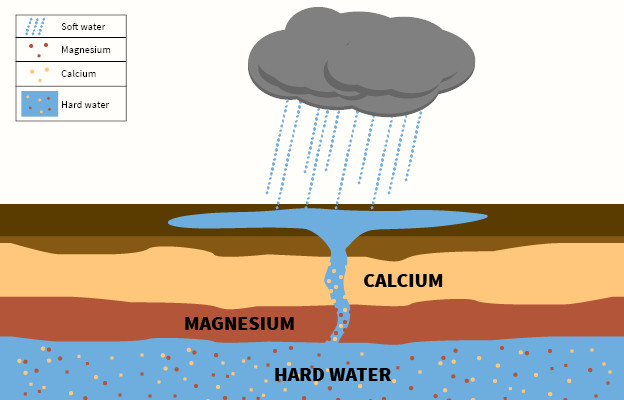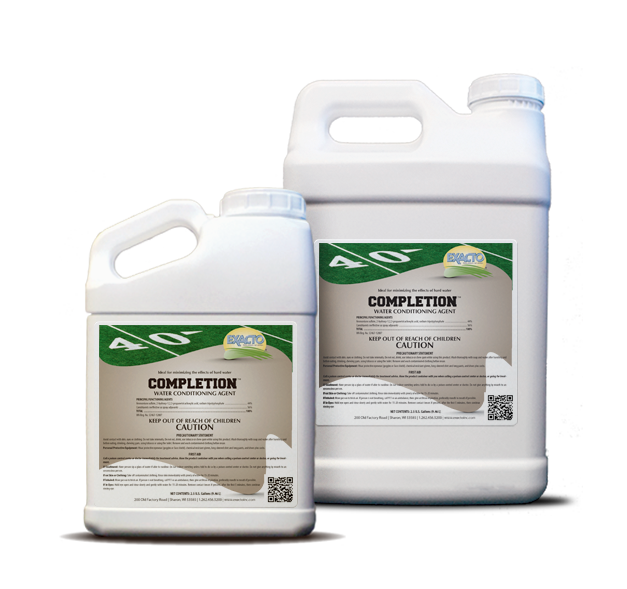Water is the largest part of any spray tank mix and can significantly impact the application quality. Hard water, the pH of the water, or contaminated water can all affect the efficacy of a spray tank mix. Water conditioners can help to mitigate these issues.
Hard Water
Hard water has a high mineral content (in contrast with “soft water”). Hard water is formed when water percolates through deposits of limestone, chalk, or gypsum, primarily made up of calcium and magnesium carbonates, bicarbonates, and sulfates. The dissolved magnesium, calcium and other minerals form the hard water cations. These cations react with the negatively charged pesticide and can reduce efficacy and/or affect active ingredient solubility.
pH of Water
The typical pH level of tap water, generally coming from groundwater systems, is between 6-8.5. Different pesticides work best under varying pH ranges. Some water conditioners will lower the pH, while others will increase the pH. To get the most out of a pesticide application, adjust the tank mix’s pH to the desired pH of the active.

Contaminated Water
Water conditioners
There are four categories of water conditioners: ammonium sulfate (AMS), acidulants, salts, and EDTA chelates. AMS and acidifiers both lower the pH of a tank mix. Salts such as potassium acetate, potassium carbonate, and sodium hydroxide raise the pH. These three categories are grouped as pH modifiers and can raise, lower, or buffer the pH of a tank mix. They can also affect a pesticide’s volatility, which is particularly important when dicamba-based pesticides are used.
pH modifiers do double duty by complexing with the hard water cations preventing them from interfering with the negatively charged pesticide.
The last category, the EDTA chelates, do not affect the pH. They sequester undesirable particles that can negatively affect a tank mix.
Water conditioners provide a simple safeguard for water of unknown quality to ensure the best results from all applications
AMS-based Water Conditioners
AMS has unique dual functionality in a tank mix. The sulfate reacts with the hard water minerals in the water, and the ammonium helps transport the active ingredient into the plant. However, using traditional AMS is inconvenient because it is needed in large quantities and is difficult to dissolve, making it expensive to ship and handle.
Fortunately, there are liquid AMS-based water conditioners that can also offer other beneficial water conditioning functionalities.
Easy-to-Use Water Conditioner
COMPLETION™ is a multifunctional, easy-to-use water conditioner that combats hard water, lowers the tank mix’s pH, and increases the efficacy of actives. In addition, COMPLETION contains AMS to enhance the uptake of herbicides into the weed. This highly-effective water conditioner is compatible with most active ingredients and minimizes antagonistic interactions between complex water ions and active pesticide ingredients.
COMPLETION ensures efficacy of pesticide applications from water of unknown quality or when a lower pH is needed.
- Highly effective water conditioner
- Lowers the pH of the tank mix
- Contains an uptake enhancer (ammonium sulfate) for herbicides tank mixes
- Minimizes antagonistic interaction between hard water ions and active pesticide ingredients
- Compatible with most pesticides
- Improves efficacy of tank mix actives
- Easy to handle, transport, and store
